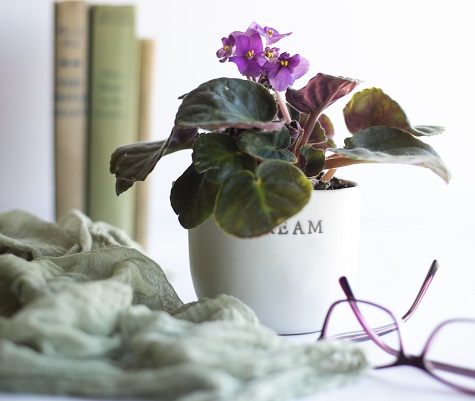
Keeping your houseplants healthy and looking their best with a bit of grooming this winter is sure to lift your spirits.
Clip off any dead leaves as they appear. Use a sharp snips or bypass pruner to make a clean cut that looks tidy and that will close quickly. An occasional brown leaf is not usually a problem but if browning continues, it might be time to act. Evaluate the growing conditions and make needed adjustments.
Brown leaves are often caused by low humidity which is common in many homes during winter. Boost the humidity in your home by grouping plants together. As one plant loses moisture through its leaves through transpiration the neighboring plants benefit. Add pebbles or marbles to the saucer or trays beneath the plants and allow excess water to collect in the pebbles below the pot. As the water evaporates it increases the humidity around the plant. Move plants that require moist soil and high humidity into a terrarium. They are attractive living decorations and make caring for high-maintenance plants easier. Read this article for instructions on how to create a terrarium garden.
Over and under-watering can also result in brown leaves, leaf edges, and tips. Water thoroughly when needed and base the frequency on the plants you are growing, room temperature and humidity. Tropical plants need more consistently moist soil while cacti and succulents like it drier. With lower light conditions in many homes, plants grow slower and may need less frequent watering in winter. Pour off any excess water that collects in the saucer which can lead to root rot.
Stop fertilizing indoor plants in winter unless they are actively growing. Applying fertilizer that plants don’t need can cause root damage, leading to leaf discoloration.
Trim off brown tips that are common on spider plants, dracaenas, Ti plants, and prayer plants sensitive to the chlorine and fluoride in water. Avoid the problem by using chemical-free water.
Wipe dust off the leaves with a damp cloth. Use a cosmetic brush to clean the fuzzy leaves of plants like African violets. Keeping your plants clean and well-groomed also helps reduce insect and disease problems.
Boost indoor plant resilience by providing the right amount of light. Move plants to a sunnier window or add artificial lights as needed. Then give plants a quarter turn every time you water. This promotes more balanced growth by exposing all parts of the plant to the light source.
Taking time to tend to your plants improves their health and beauty while elevating your mood and helping fight stress.
Melinda Myers has written more than 20 gardening books, including Small Space Gardening. She hosts the “How to Grow Anything” DVD series and the Melinda’s Garden Moment TV & radio segments. Her website is MelindaMyers.com.
Related Articles & Free Email Newsletter Sign Up
How to Grow Ferns in a Greenhouse or Indoors
The Swiss Cheese Plant Has Holes in Leaves for a Reason




Comment here